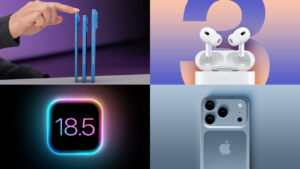14-inch M3 MacBook Pro review: So close yet so far

Expert’s Rating
Pros
Excellent displayExcellent speakersM3 offers a performance boost512GB SSD is now standard
Cons
Memory upgrades are pricey
Our Verdict
Generally, the M3 MacBook Pro succeeds in replacing the 13-inch MacBook Pro, offering a combination of features that improve upon its predecessor. However, as a “pro” laptop, a question of performance value arises–the 8GB standard configuration is not enough for pro apps, and upgrading the memory to 16GB or 24GB is pricey.
Price When Reviewed
$1,599
Best Prices Today: Apple 14-inch MacBook Pro (M3, 2023)
Apple introduced the 14-inch MacBook Pro with a base M3 chip as a replacement for the 13-inch MacBook Pro that served as the company’s most affordable pro laptop. Generally, the M3 MacBook Pro succeeds in that role, offering a combination of features that improve upon its predecessor.
However, as a “pro” laptop, a question of performance value arises. Is it really up to the professional-level tasks that are associated with pro usage?
MacBook Pro M3: Specifications
The laptop in this review is the base model 14-inch MacBook Pro with a base M3 System on a Chip (SoC).
CPU: M3 with an 8-core CPU (4 performance cores, 4 efficiency cores), 16-core Neural Engine
GPU: 10-core GPU
Memory: 8GB unified memory (100GBps memory bandwidth)
Storage: 512GB SSD
Display: 14.2-inch Liquid Retina XDR display; 3024-by-1964 native resolution at 254 pixels per inch; 1,000,000:1 contrast ratio; 1,000 nits sustained full-screen XDR brightness, 1,600 nits peak HDR content only, 600 nits SDR brightness; P3 color; True Tone; ProMotion
Ports: 2 Thunderbolt 4/USB 4; SDXC card slot; HDMI 2.1; MagSafe 3; 3.5mm audio
Networking: Wi-Fi 6E (802.11ax); Bluetooth 5.3
Weight: 3.4 pounds (1.55 kg)
Dimensions: 0.61 x 12.31 x 8.71 inches (1.55 x 31.26 x 22.12 centimeters)
Battery capacity: 70Wh
Price: $1,599/£1,699
M3 MacBook Pro: Display, speakers, ports
High-quality Liquid Retina XDR display
High-fidelity six-speaker sound system with force-cancelling woofers
Port configuration has not changed from the previous generation
As with the M3 Pro and M3 Max laptops in the lineup, the 14-inch MacBook Pro M3 has a Liquid Retina XDR display, the best display available from Apple–it also bests most Windows PC laptop displays. It’s a big improvement over the 13.3-inch Retina display used in the 13-inch MacBook Pro.
The audio quality from the six-speaker sound system with force-canceling woofers leaves nothing to be desired–external speakers are superfluous. It’s another big improvement over the stereo speakers in the 13-inch MacBook Pro. While Apple’s current 15-inch MacBook Air also has a six-speaker sound system, the 14-inch MacBook Pro produces better sound.
As with the 15-inch MacBook Air, the 14-inch MacBook Pro has two Thunderbolt 3/USB 4 ports, a MagSafe port, and a headphone jack. The MacBook Pro also has an SDXC card reader, which is used to transfer data between the laptop and a device. Photographers and videographers can use the slot for the cards from cameras–though, as we’ll discuss in a bit, professionals who deal with many very large files should not get the base M3 MacBook Pro. And there’s an HDMI 2.1 port, which is practical for people who make presentations and want to quickly connect to a projector or large external display.
The 14-inch MacBook Pro ports now include an SDXC card slot and an HDMI 2.1 port.
Foundry
M3 MacBook Pro: CPU and GPU performance
Same number of CPU cores as older chips, but better performance
Improved GPU performance
Beware of the 8GB of memory base configuration
With the base versions of Apple’s System on a Chip, the number of CPU cores does not differ between the M3, M2, and M1; each chip has eight total CPU cores, divided between four performance and four efficiency cores. With the MacBook Pro’s M3, the CPU clock speed is faster, and the 3nm process used to create it allows for more transistors. In all, the M3 can complete more commands at the same time than its predecessors.
To gauge performance, we ran benchmark tests using Geekbench 6, Cinebench 23, and Cinebench 2024. We compared the test results of the M3 with the results we have available for the M2 MacBook Pro, the M1 13-inch MacBook Pro, and the M1 MacBook Air. Each test result differed slightly in terms of the M3’s increase over its predecessors, so for the sake of simplicity, we are discussing the results as an average of all three tests.
Geekbench 6 benchmarks
Cinebench R23 benchmarks
Cinebench 2024 benchmarks
Compared to the M1, the M3’s performance increase in single-core tests is 30 percent, while the multi-core tests show a 43 percent improvement. Compared to the M2, the M3’s tests show a 19 percent single-core and a 24 percent multi-core improvement.
We also ran the Mac Power Monitor app during the multi-core test with Cinebench 2024 to determine the utilization of the CPU cores and power consumption. The performance cores ran at 3.7GHz, and the efficiency cores at 2.7GHz. All cores were used at 100 percent, and Mac Power Monitor determined an average power consumption of just under 18 watts–the graphics processor has nothing to do in this test except briefly refresh the monitor display. As the benchmark runs, the laptop’s fans kick in to maintain a proper operating temperature, but the clock speed of the cores is not throttled.
To measure the performance of the M3’s graphics processing unit (GPU), we used 3D Mark, which showed a 19 percent improvement of the M3 over the M2, and a 73 percent increase over the M1. With Geekbench 6’s Compute Metal test (which isn’t as challenging as the 3D Mark test), the M3 had a 9 percent increase over M2 and a 50 percent increase over M1.
3D Mark Wildlife Extreme benchmark
When testing with 3D Mark Extreme, we measured the GPU’s clock speed and its power consumption with Mac Power Monitor. The GPU cores clocked in at 1.34GHz and consume around 17 watts on average. We saw that with the CPU, only the efficiency cores are used, consuming about 1 watt.
We attempted to run Cinebench 2024’s GPU test, but we encountered a problem: the test cannot run with the M3 MacBook Pro’s base configuration of 8GB of unified memory. This brings up an issue that has stirred up controversy in the Mac community: While Apple considers this laptop a pro-level device, no serious pro using high-end pro apps would buy a Mac with just 8GB of RAM. Even 16GB of memory barely makes this model suitable for such tasks. Read our separate article that explains why 8GB of memory is not enough on the M3 MacBook Pro, even for general-purpose use with non-pro software.
M3 MacBook Pro: SSD and SDXC performance
The standard configuration of the M3 MacBook Pro includes a 512GB SSD, which Apple has installed as a pair of 256GB chips. When tested with the Blackmagic Disk Speed Test, the SSD write speed was 29 percent faster than the M1 MacBook Pro’s 512GB SSD, and the read rate increased by 10 percent. Compared to the 1TB SSD in the M2 MacBook Air, there is no difference when writing, but the M3 is 10 percent faster when reading.
SSD performance can vary from laptop to laptop, even if they have the same storage capacity. We’ve found that write and read speeds are around 3,000MBps, so you’re in good hands with the M3 MacBook Pro.
We also checked the speed of an external USB 3.2 Gen 2 1TB Samsung T7 SDD by performing file transfers of 52GB worth of music files (6,288 total files) and 9 large image files that totaled 39 GB. Averaged across all tests, we determined a write rate of 639MBps and a read rate of 710MBps.
When transferring files from an SDXC card via the laptop’s built-in SDXC card slot, we saw read speeds of 94MBps and write speeds of 81MBps.
The M3 MacBook Pro brings a new design adn an upgraded display compared to the 13-inch M2 model.
Foundry
Should you buy the 14-inch M3 MacBook Pro?
As a successor to the 13-inch M2 MacBook Pro, the 14-inch MacBook Pro M3 is worthy. At $1,599/£1,699, the new MacBook Pro is $100/£100 more than the 13-inch MacBook Pro with 8GB of memory and a 512GB SSD, but the new laptop offers significant updates in all areas: the display, the audio system, the ports, and of course, the chip.
However, the MacBook Air complicates a customer’s buying decision. The 13-inch MacBook Air M2 with 8GB of memory and a 512GB SSD is $1,399/£1,449, and a similarly configured 15-inch MacBook Air is $1,499/£1,599. So, the Air is cheaper, but its display isn’t as nice (but it’s still high quality) as the MacBook Pro’s, and the Air doesn’t have an HDMI port or an SDXC card slot. It’s likely you don’t need those features and can’t justify the extra money for the MacBook Pro. Yes, the M3 is faster than the M2, but if you’re performing general productivity tasks and not venturing into pro apps at all, you won’t notice the speed difference.
This brings us to one major reason why you should not buy the 14-inch MacBook Pro M3: Apple’s decision to equip the $1,599/£1,699 standard configuration with 8GB of memory. It’s simply not enough for professional graphics, photo, and video software or developer tools. You can upgrade the memory to 16GB or 24GB, but that will add an extravagant $200/£200 or $400/£400 to the price tag, respectively. At that point, you might as well spend a bit more money and upgrade to a 14-inch MacBook Pro with a faster M2 Pro (11-core CPU, 14-core GPU), 18GB of memory, and a 512GB SSD, which is $1,999/£2,099.
This article originally appeared on Macwelt and was translated by Roman Loyola.
MacBook




